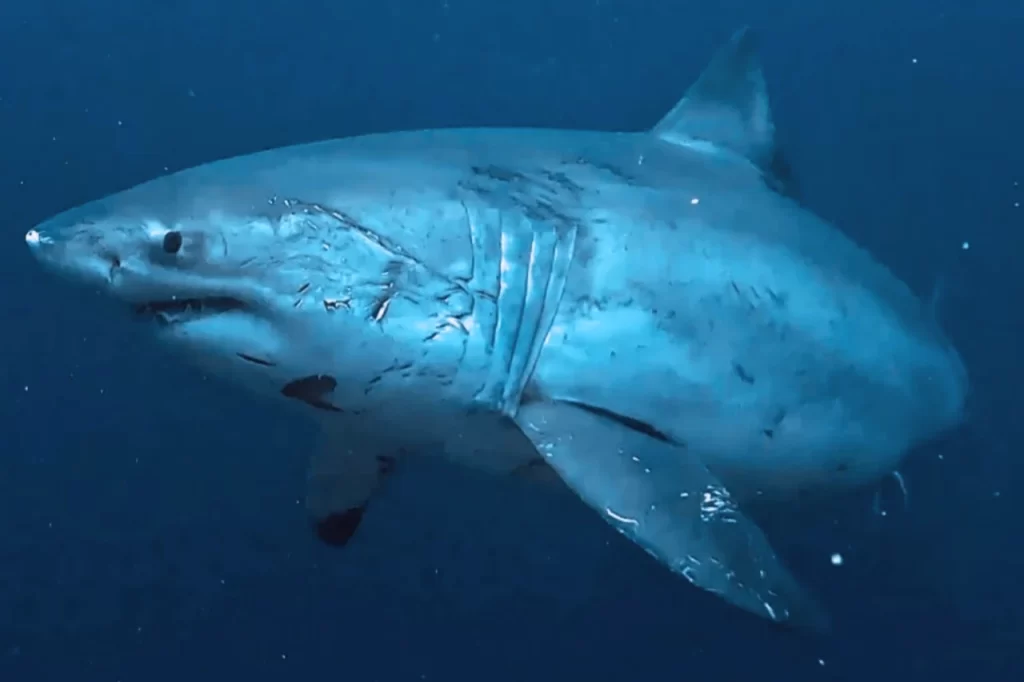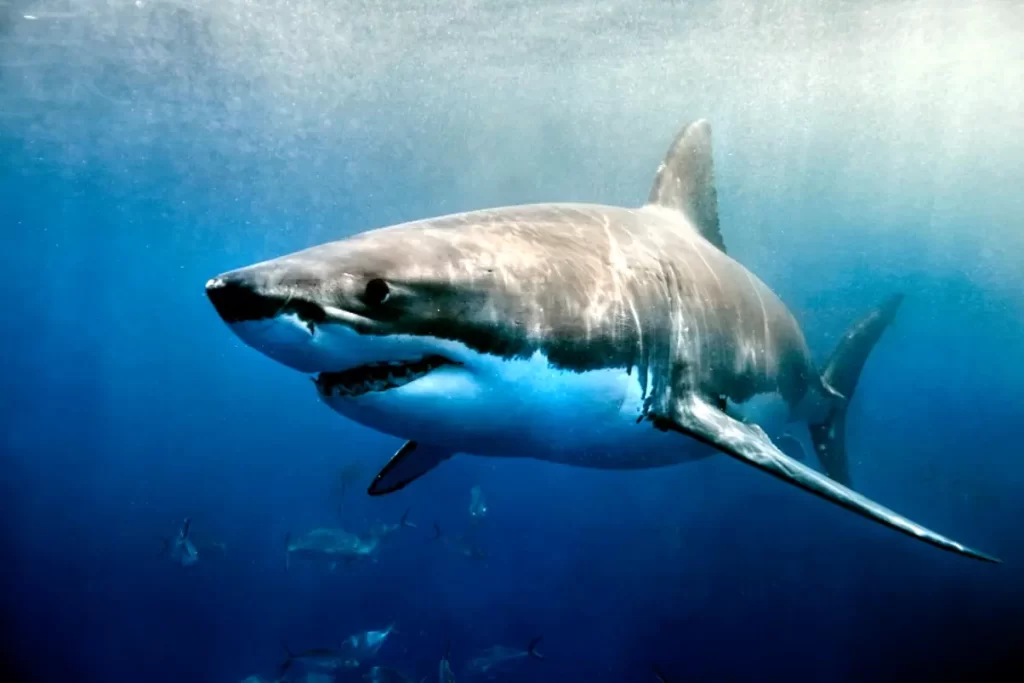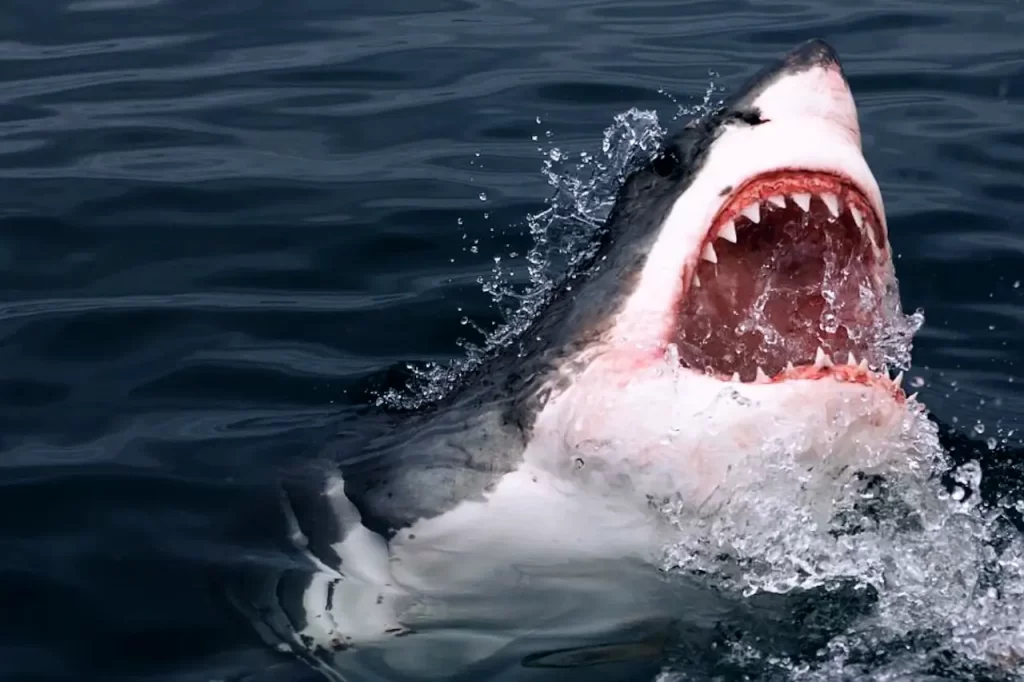Great Advanced Open Water Course Experience
PADI Advanced Open Water Diver Course The advanced open water diver course has 5 dive specialties to choose. Two are chosen for you, Deep and Navigation, the other three are…

Nusa Penida, an island near Bali, Indonesia, is a key spot for diverse marine life and popular dive sites. In 2025, great white shark sightings (Carcharodon carcharias), uncommon in warm tropical waters, drew attention in Bali. This guide covers great white shark facts that has been seen in Nusa Penida dive sites locations like Ped, Crystal Bay, and Blue Corner combine with fishermen’s tales.
Great white sharks are strong ocean predators, and seeing one in Nusa Penida is really cool. These facts, based on scientific research, explain what makes great white sharks unique.
Great whites play a vital role in oceans, and their rarity makes great white shark sightings a highlight for Bali diving 2025.

Great white sharks (Carcharodon carcharias) are rare in Nusa Penida dive sites, but their appearances are really exciting. Over the past 10 years, divers observed them at Ped, Crystal Bay, and Blue Corner. Here are the key facts about these significant great white shark sightings in Bali.

Great white shark encounter Nusa Penida dive sites occur every 2 to 5 years, but they’re pretty rare. With thousands of dives each year across over 50 dive sites, the chance of seeing one is less than 0.01%. Most sightings, like those in 2014, 2019, and 2022, happen from August to October when water cools to 17 to 20°C, a temperature great whites prefer. The 2025 sighting in March was unusual, likely due to tuna. Ped diving, Crystal Bay, and Blue Corner are the main locations, as they have deep waters and many fish. Only about 5 to 7 sightings have been recorded in 10 years, and the 2019 Blue Corner suggests sharks may stay longer if food is plentiful.
For great white shark sightings in Nusa Penida, divers should stay calm, keep groups together, and avoid sudden movements. Face the shark, maintain eye contact, and move slowly toward the reef. Carry a dive knife for safety but do not provoke the shark. Nusa Penida’s dive guides are trained for these rare encounters, ensuring safe for scuba diving in Nusa Penida. These steps make sightings safe and exciting.
These sightings generate enthusiasm in Bali’s dive community, reinforcing Nusa Penida as a top underwater destination.
Nusa Penida’s fishermen share stories that are pretty intriguing, told in villages or at harbors after fishing trips. These stories come from tales fishermen share in Nusa Penida’s villages, raising questions about great white sharks in Nusa Penida. They’re brief but add interest to Indonesia shark diving.
Fishermen use small wooden boats, called jukung, to catch tuna or marlin. Every few years, their nets or lines catch something large, 3 to 5 meters long, too heavy to manage. It risks tipping their boat, so they release it quickly. It’s a big deal!
In August 2017, a Toya Pakeh fisherman set nets for tuna at night. His boat shook as a large object, about 4 meters long, got caught. It pulled strongly, tilting the 6-meter boat. They cut the net and saw a gray-white shape sink. Villagers believed it was likely a great white, not a marlin.
In October 2020, near Blue Corner, a fisherman targeting marlin had his rod pulled hard. A heavy object dragged the boat at dawn, briefly showed a wide head and white belly, then broke the line. The crew stopped, aware their boat couldn’t handle it. Ped elders connected it to great white shark sightings.
In 2015, near Crystal Bay, a fisherman’s net caught a large shape during a tuna season. The boat shifted, ropes tight, as a 3 to 5-meter object moved below. They released it, watching it sink, and later suggested it was a great white. Villages talked about it for weeks.
These stories appear every few years, often in late summer or fall when fish are abundant in Nusa Penida waters. Without photos, they remain unconfirmed, shared to teach respect for the sea. Some think it could be another large fish, but the size and strength suggest great whites. Fishermen caution young sailors to avoid these giants, as small boats cannot manage a 1,000-kilogram creature. These stories add curiosity to Bali waters.
Bali Aqua Dive Center, a trusted PADI-certified team, offers a dive trip in Nusa Penida for beginners and experienced divers. For 2,900,000 IDR, this fun dive Bali package provides a full day of Nusa Penida diving. Here’s what’s included.
Divers see corals, schooling fish, manta rays, and occasionally rare sharks in Nusa Penida dive sites. Manta Point features manta rays, Crystal Bay has active marine life, SD offers calm reefs, and Ped has deep areas, ideal for Indonesia shark diving. This fun dive Bali with Bali Aqua Dive Center provides a chance to see great white sharks with luck.
Nusa Penida is one of Bali’s top diving areas, offering a mix of rich marine biodiversity and rare sightings. Great white sharks (Carcharodon carcharias) have occasionally been recorded at sites like Ped, Crystal Bay, and Blue Corner with sightings in 2014, 2019, 2022, and 2025, likely linked to cooler seasonal waters and fish migrations. Local fishermen also report seeing large, unidentified marine animals from time to time, adding to the mystery of these waters.
Beyond these rare encounters, Nusa Penida delivers consistent diving highlights: manta rays, coral reefs, schooling fish, and drift dives that attract divers of all levels. With Bali Aqua Dive Center, you’ll explore these sites under expert guidance and with up to date knowledge of local conditions.
Whether you’re drawn by the chance of something extraordinary or simply want to enjoy the beauty of Bali’s underwater world, Nusa Penida always has something worth discovering.
Want to know more about Nusa Penida dive sites?
PADI Advanced Open Water Diver Course The advanced open water diver course has 5 dive specialties to choose. Two are chosen for you, Deep and Navigation, the other three are…
Great white sharks are strong ocean predators, and seeing one in Nusa Penida dive site is really cool. These facts, based on scientific research, explain what makes great white sharks…
Mastering a range of finning styles is crucial for all levels of divers, from beginners to seasoned instructors. Using the appropriate kick for a given situation can greatly improve your…
The coral reefs and marine life of Bali are breathtaking and the reason why the region is loved for scuba diving. The warm waters and high visibility enhance the underwater…
The USAT Liberty Wreck isn’t just old metal underwater but a giant playground of steel and corals waiting to be explored. Stretching 120 meters long, it sits right by Tulamben’s…
Mastering a range of finning styles is crucial for all levels of divers, from beginners to seasoned instructors. Using the appropriate kick for a given situation can greatly improve your…
Great white sharks are strong ocean predators, and seeing one in Nusa Penida dive site is really cool. These facts, based on scientific research, explain what makes great white sharks…
The USAT Liberty Wreck isn’t just old metal underwater but a giant playground of steel and corals waiting to be explored. Stretching 120 meters long, it sits right by Tulamben’s…